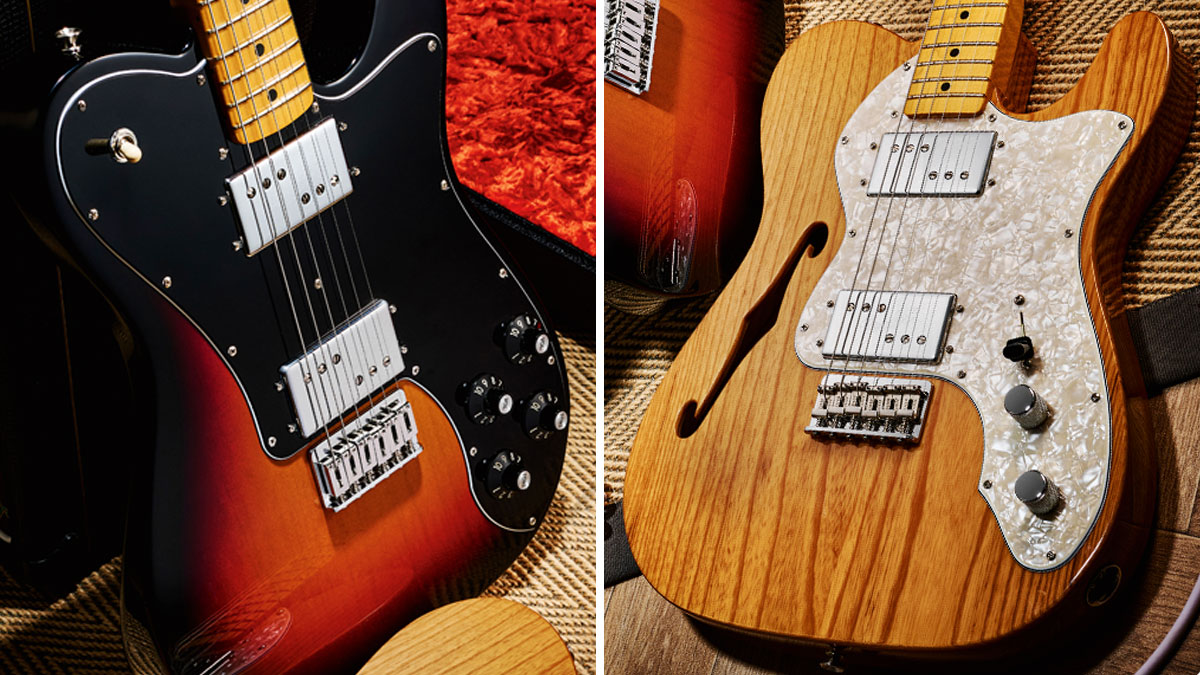
By the early 1970s, the Telecaster had already been around for more than 20 years. Five decades on and this seems like nothing at all. But back then it made Fender, still under relatively new management, feel that a change of direction was needed in order to refresh the range and perhaps chime better with the tougher music scene that was emerging.
The company was experiencing a dip in popularity, since everyone from The Stones’ Keith Richards to Wishbone Ash, Aerosmith, Mick Ronson with Bowie, Phil Manzanera with Roxy Music, Adrian Fisher with Sparks, Lynyrd Skynyrd, Martin Barre with Jethro Tull and, of course, a still massive Led Zeppelin were all mainly toting Gibsons. So perhaps those once all-conquering single coils had become the problem?
Enter the Thinline (the second version), Custom and Deluxe Telecasters, all fitted with at least one brand-new Fender humbucking pickup. Fender co-opted Seth Lover, designer of Gibson’s own humbucker, to develop something that would not only suit the Fender style but produce the thicker tones that ’70s rock demanded. Using a material called CuNiFe (pronounced “cu-ni-fay”), Lover came up with what Fender called the ‘Wide Range’ pickup. Here’s a brief history from Tim Shaw, chief engineer at Fender.
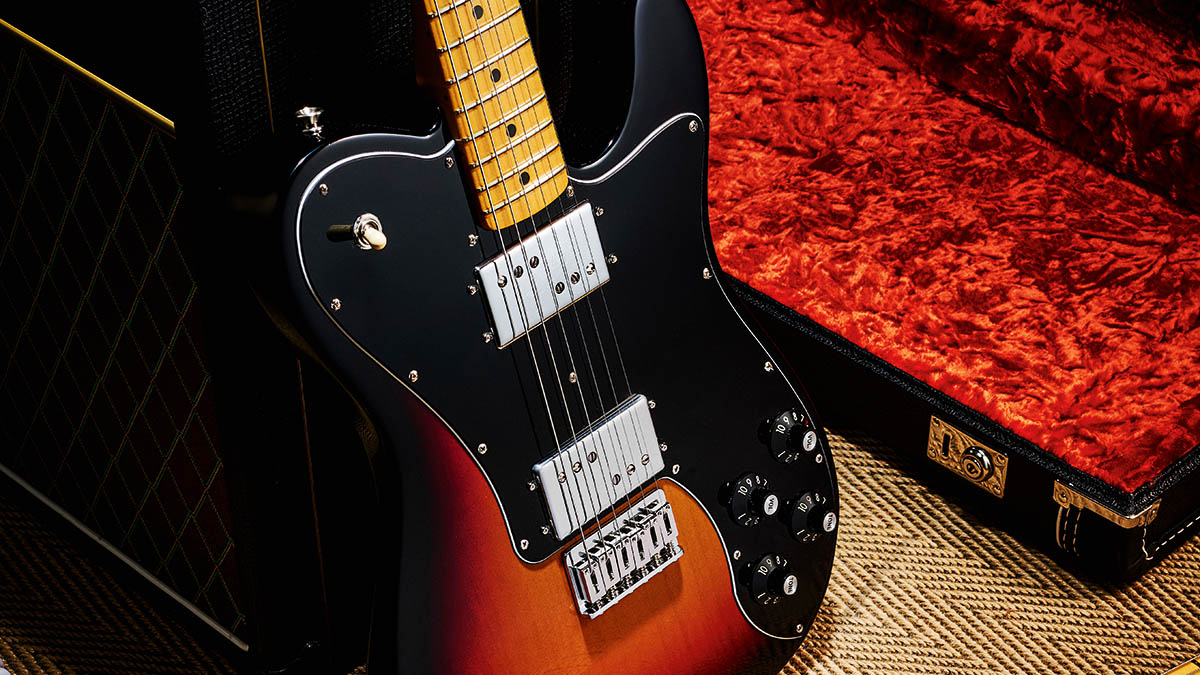
“CuNiFe has been around for about 80 years,” he explains. “It’s an alloy of copper, nickel and iron, has been used in many different applications and, if you messed with it long enough, you could make a magnet out of it. At the time, it was the only magnet material that could be made into a screw. Since the patent for Seth’s original humbucking pickup was still in force, he couldn’t infringe himself, so – knowing about CuNiFe – he decided to try to make a pickup out of it.
Seth learned pretty quickly that it wasn’t like Alnico or other magnets, and had to allow for the fact that it didn’t have much iron in it, so a pickup he wound with CuNiFe didn’t have a lot of low‑end. That forced him to make it bigger than the one he’d designed previously. And that’s what became the Wide Range humbucking pickup.”
A by-product of this larger footprint was that the pickup acted on a longer length of string, helping it to produce that thicker sound – and one that was quite distinct from Seth’s original Gibson design. But more on those tones later.
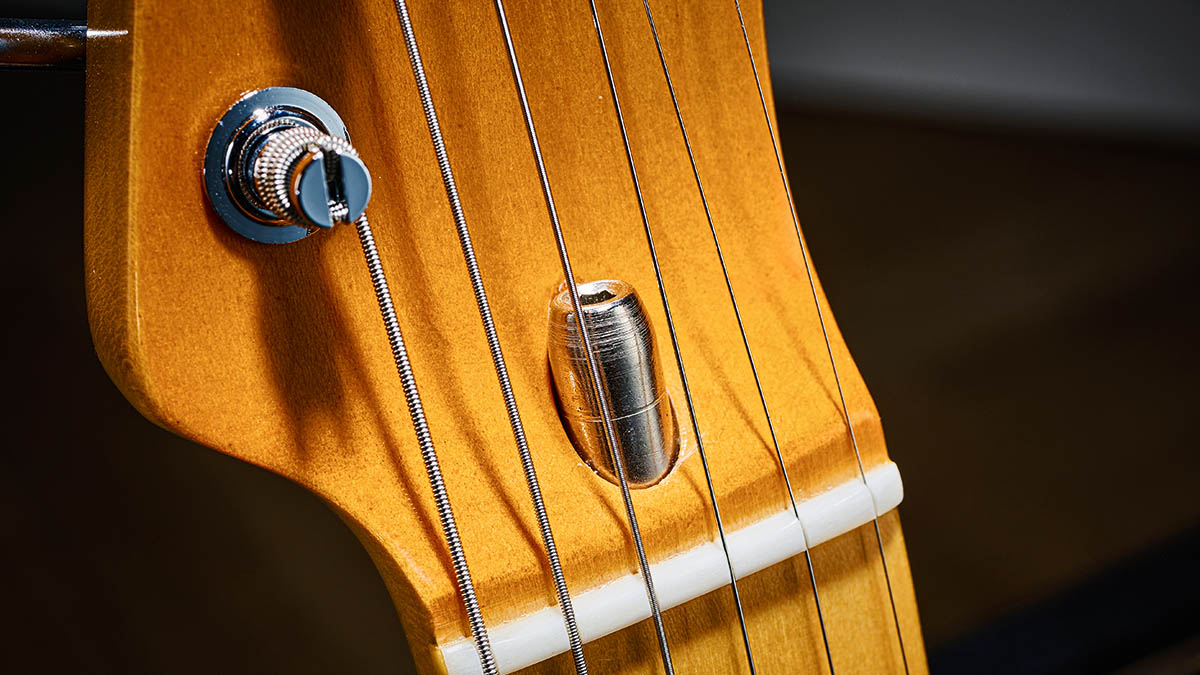
The instruments we have here, from the American Vintage II series, are the 1972 Telecaster Thinline and 1975 Deluxe, which both feature dual Wide Range humbuckers. Their sibling, the Custom, a favourite of Keith Richards, of course, featured a neck humbucker but a regular Tele bridge pickup and is also available in the new range as the 1977 Telecaster Custom.
Things to note are the Deluxe’s large Stratocaster-style headstock and, due to the chunky bridge pickup on both guitars, hardtail bridges with through‑body stringing. Interestingly, while the Deluxe comes with solid stainless saddles, the Thinline retains the vintage-style bent steel variety.
Timber-wise, the Deluxe is a two-piece spread of not overly heavyweight alder, while the Thinline is hewn from nicely grained ash. Back in the day we vintage aficionados felt the natural look we see here seemed somewhat anaemic, but a few decades on – and in this lightly tinted form and with such attractive grain – it looks delightful. Three-tone sunburst, of course, remains timeless, and the Deluxe’s black ’guard sets it off perfectly.
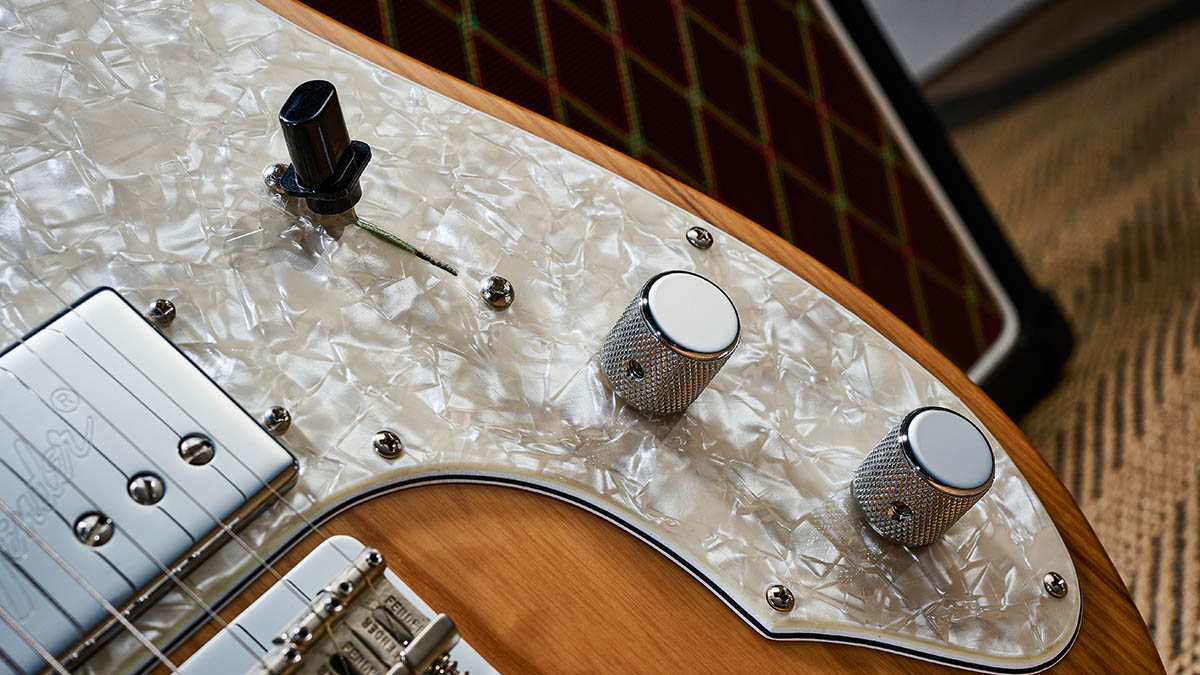
One of the changes of which vintage die‑hards disapproved was the three-bolt neck attachment with ‘Micro-Tilt’ adjustment. While it was designed to eradicate the need for shims should your neck require a steeper angle during setups, detractors deemed the mechanism a ‘tone sucker’. Add to this opinion the often‑sloppy neck joints of the time (which, thankfully, are no longer a problem) and you could perhaps see their point.
Tuners on both instruments are Schaller-style enclosed units, and while the Deluxe carries double string trees (first and second, and third and fourth strings), the Thinline has the usual lone retainer.
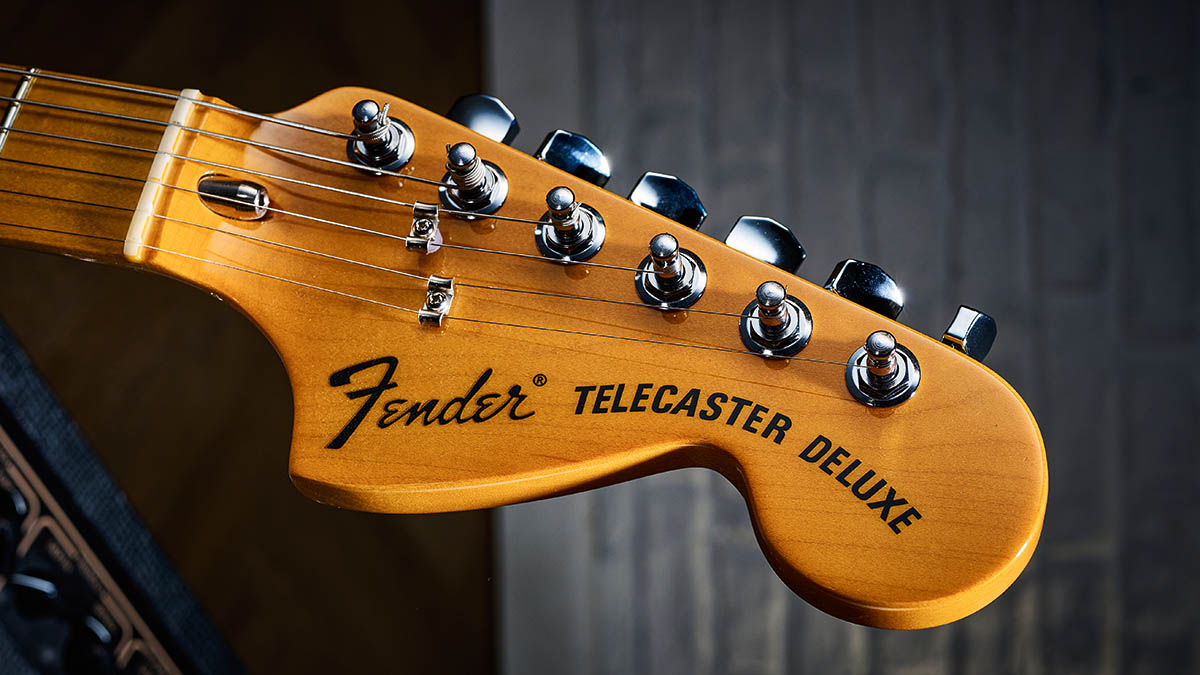
A major contrast comes by way of the two guitars’ control setups. Whereas the Thinline has the conventional Tele single volume and tone controls plus pickup selector, the Deluxe goes for Gibson’s jugular with volume and tone rotaries for each humbucker plus a Les Paul-style shoulder-mounted three-way toggle (as did the Custom).
This necessitated the already large ’guard of the Thinline to be extended to accommodate it. Another difference is the fact that the Thinline retains Fender’s original 184mm (7.25-inch) radius neck with vintage tall frets, whereas the Deluxe features the more modern 241mm (9.5-inch) and medium-jumbo formula.
Now, 50 years on, it has to be said that Fender got the looks of these guitars spot on. The big pickguards (especially the Thinline’s white pearloid) make a strong visual statement, as do those big and bold humbuckers with their three-a-side polepieces. And a Tele with a Strat headstock? Absolutely!
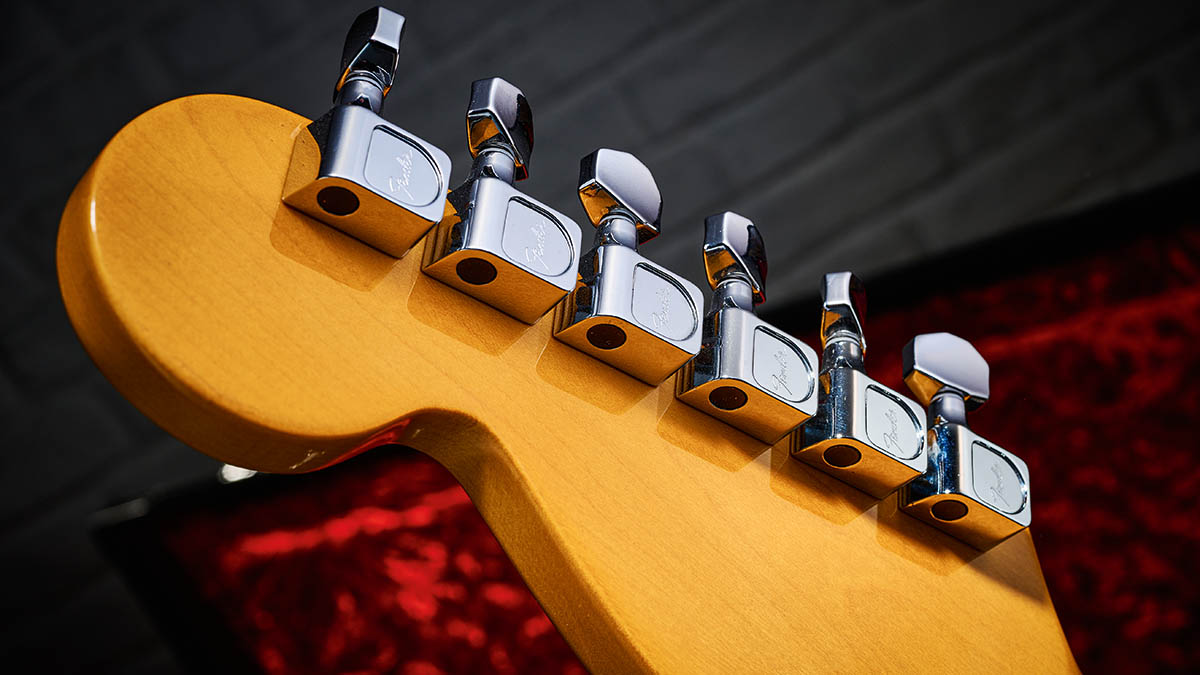
Feel & Sounds
During the ’70s Fender necks were often slimmer than they had previously been. And our faithfully reproduced Thinline and Deluxe Teles conform to this trend, especially down at the nut end, where the general C-section slims down to 20mm depth at the 1st fret (compared with the 21mm of our own ’52 Tele Reissue, which is also more U-shaped).
If you’re not used to such slinkiness, it might take you by surprise, but these guitars remain supremely comfortable, aided by their perfectly set actions. The difference in feel between the two, the Deluxe with its 241mm (9.5-inch) radius fingerboard and 21 medium-jumbo frets, and the Thinline’s 184mm (7.25-inch), is not as great as you might expect.
Barre chords are perhaps easier on the smaller radius, while heftier bends and vibrato seem more natural on the larger of the two. But, really, the difference is marginal. The guitars clock in at a virtually identical 3.5kg (7.75lb), but the Deluxe’s belly cut means it’s the more stand-up friendly of the two.
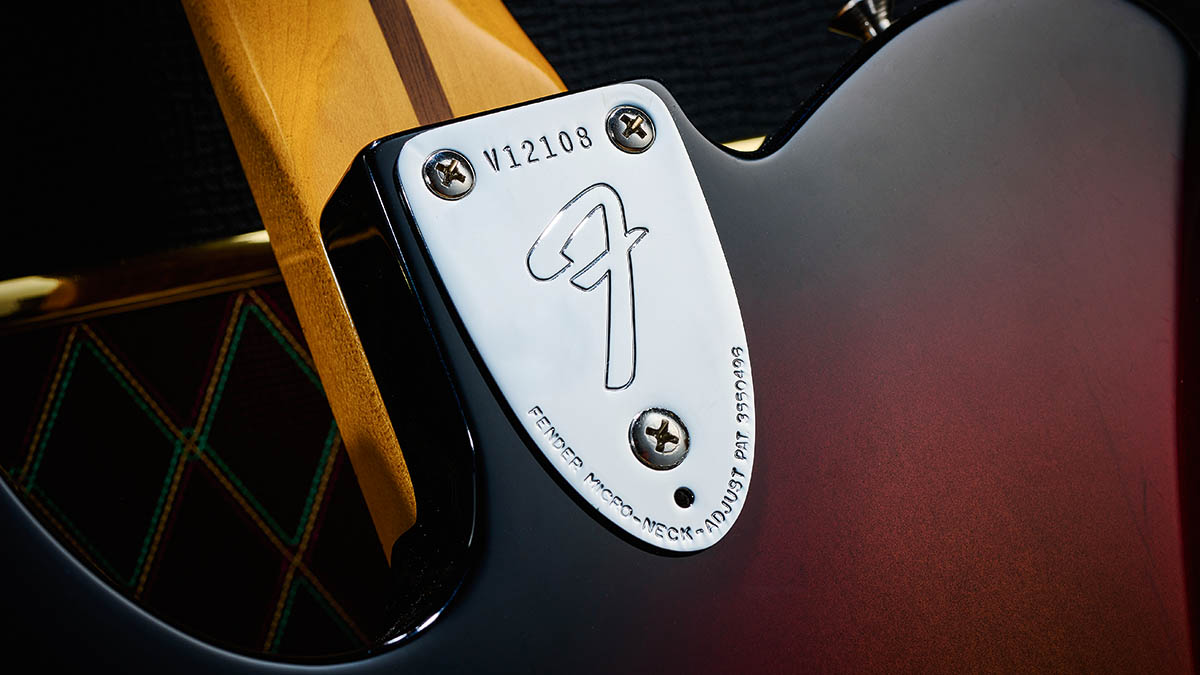
Anyone who’s put a Gibson humbucker in a Strat knows it doesn’t instantly transform it into a Les Paul, tonally. So many things are different: the woods, the construction, even the bridge/tailpiece style will impact on the sound.
So, while of course a ’bucker on a Strat is going to sound thicker, it’s thicker in a slightly different way. With this in mind, and knowing that CuNiFe sounds unlike Alnico, ceramic or other magnets, we plugged into our ever‑faithful Laney Lionheart L20T.
Thinline first, and we notice a spanky clean tone that’s definitely within the Fender family of sounds – a little bit Jazzmaster, perhaps? There’s brightness across all pickup selections, but it’s never harsh or shrill. And yet neither is it ‘fat’ in the Gibson sense; there’s clarity even when pushed hard, across neck and bridge pickups, and with both on.
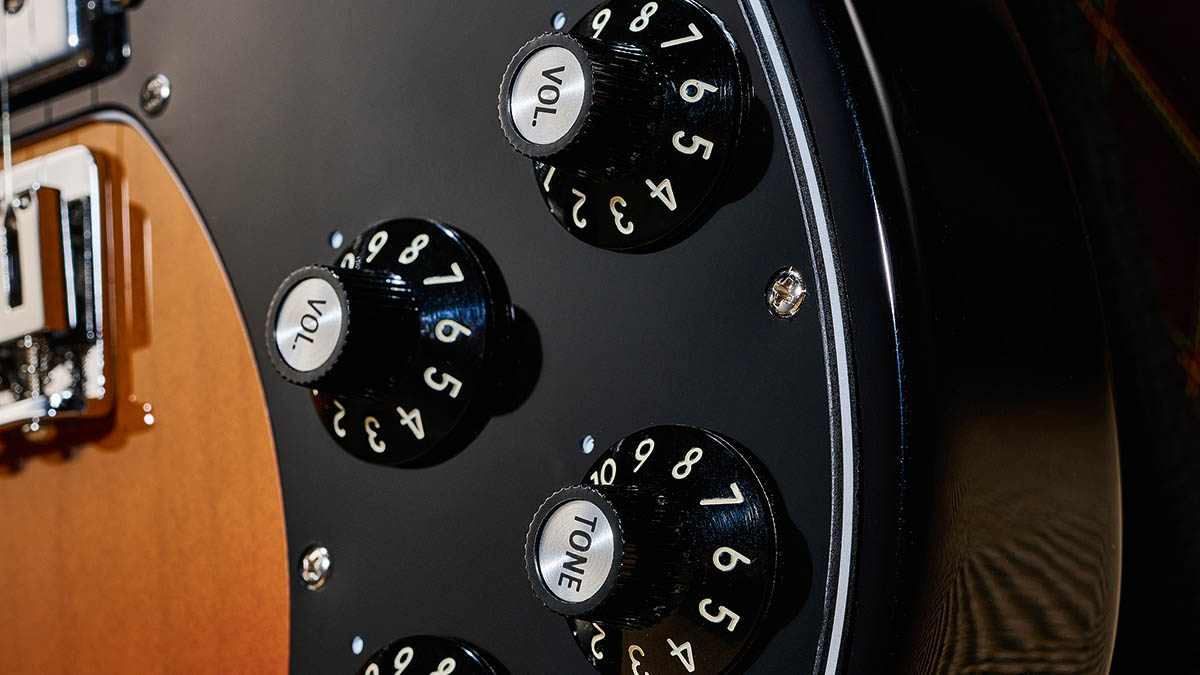
Dirtying things up it refuses to get mushy, even with the Lionheart’s gain whacked up high. Sure, the semi-hollow nature of the Thinline’s body will be adding something to the magic here, but it’s the sum of the parts and not any single facet that makes the guitar so engaging.
Our Deluxe model is definitely a more strident beast. Still not particularly Gibson‑like, nonetheless it has a harder, darker edge. Clean, the two guitars are very closely matched, but cranking up the sunburst it becomes something of a monster. It wants to feed back but in a nice, controllable way, and will happily sustain should that be your thing.
Of course, with its more comprehensive control setup there’s a bigger range on the Deluxe than on the Thinline, mainly when you’re balancing tones and volumes between the pickups. But both are superb‑sounding instruments, with tones that are distinctly their own.
Verdict
Confession: this reviewer was among those who never quite got Fender’s ’70s reimagining of its Telecaster range. “What was wrong with it in the first place?” we reasoned. Well, actually, Fender was right all along, as has been proved with so many ‘lemons’ down the decades. These guitars do exactly what Fender intended, lending a new and more chunky voice to their long-established workhorse.
Just as with Gibson’s ES-335 and Les Paul, the Thinline is the more subtle and perhaps refined of these two guitars; its ever-so-slightly lighter tones would make it the perfect partner for a nice set of pedals into a clean but throbbing guitar amp. The Deluxe retains that clean ‘clank’ but with a bit more in the tank should you want it.
Specs
Fender American Vintage II 1972 Telecaster Thinline
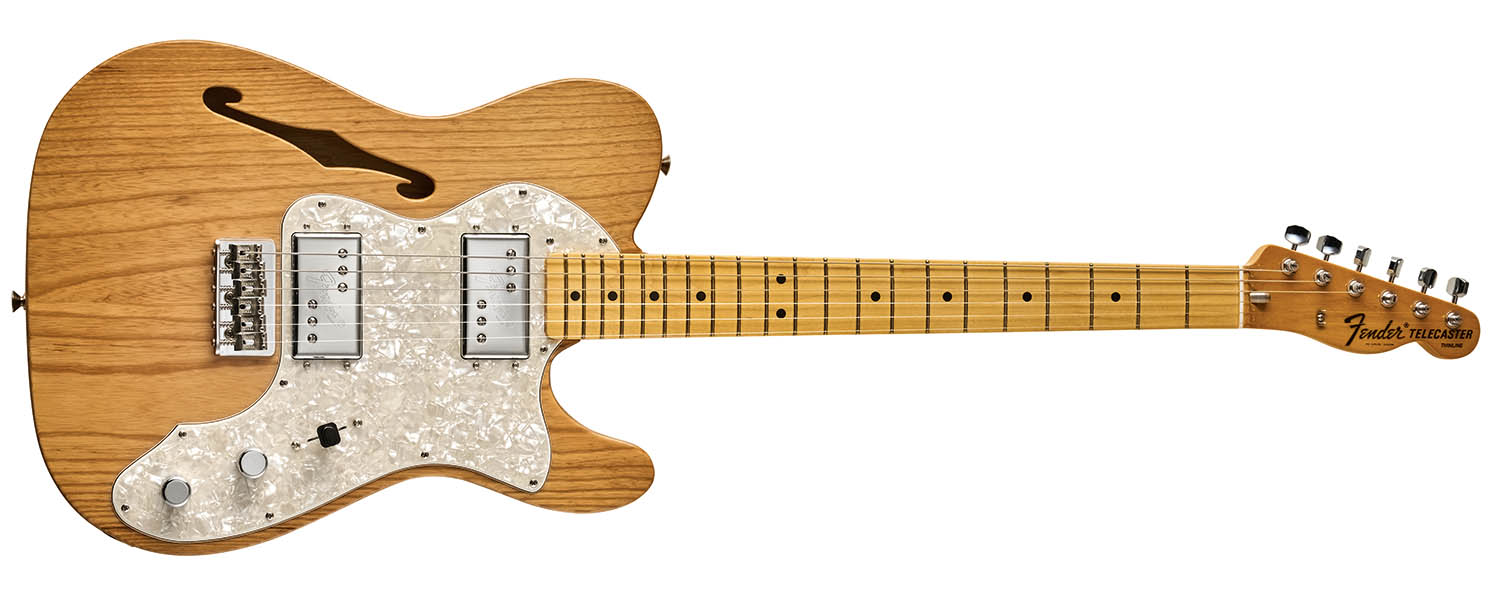
- PRICE: $2,399/£2,259 (inc case)
- ORIGIN: USA
- TYPE: Single-cut, semi-hollow thinline electric
- BODY: Semi-hollow ash
- NECK: Maple
- SCALE LENGTH: 648mm (25.5”)
- NUT/WIDTH: Bone/42mm
- FINGERBOARD: Integral maple, with 184mm (7.25”) radius
- FRETS: 21, vintage tall
- HARDWARE: Chrome plated, hardtail bridge/tailpiece with through-body stringing
- STRING SPACING, BRIDGE: 55mm (2.165”)
- ELECTRICS: 2x Fender CuNiFe Wide Range pickups, 3-way lever pickup selector switch, master volume and tone controls plus
- WEIGHT (kg/lb): 3.515/7.75
- OPTIONS: N/A
- RANGE OPTIONS: The third ’70s Tele in the AVRII range is the 1977 Telecaster Custom ($2,199/£2,079) also available in the Mexican-made Vintera range as the ’70s Custom ($1,129/£1,009)
- LEFT-HANDERS: No
- FINISH: Aged Natural (as reviewed), 3-Color Sunburst, Lake Placid Blue
Fender American Vintage II 1975 Telecaster Deluxe
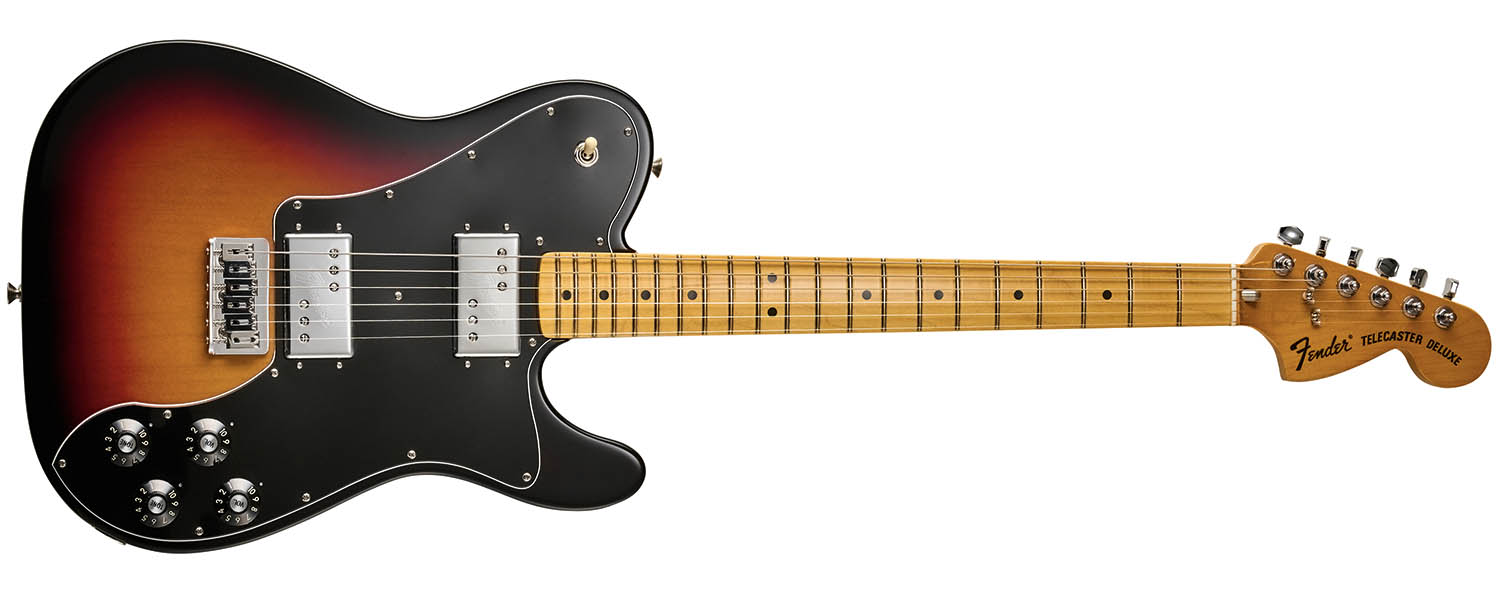
- PRICE: $2,399/£2,179 (inc case)
- ORIGIN: USA
- TYPE: Single-cut, solidbody electric
- BODY: Alder, with belly cut
- NECK: Maple
- SCALE LENGTH: 648mm (25.5”)
- NUT/WIDTH: Bone/42mm
- FINGERBOARD: Integral maple, with 241mm (9.5”) radius
- FRETS: 21, medium jumbo
- HARDWARE: Chrome plated, hardtail bridge/tailpiece with through-body stringing
- STRING SPACING, BRIDGE: 55mm
- ELECTRICS: 2x Fender CuNiFe Wide Range pickups, 3-way toggle pickup selector switch, individual pickup volume and tone controls
- WEIGHT (kg/lb): 3.515/7.75
- OPTIONS: N/A
- RANGE OPTIONS: The more modern American Pro II Tele Deluxe with Tim Shaw-designed V-Mod II Double Tap humbuckers costs $1,749/£1,839. The Vintera ’70s Telecaster Deluxe is $1,129/£979
- LEFT-HANDERS: No
- FINISH: 3-Color Sunburst (as reviewed), Black, Mocha
- CONTACT: Fender







